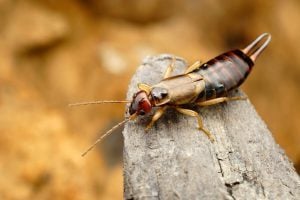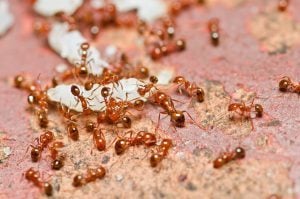Kissing bugs are a relatively new and unfamiliar danger to the humans but they present a serious threat to our health, as up to 50 thousand people die of their bites annually. Here we’ll disclose all the truth about this insect which is poorly studied and about the consequences of encountering them. You’ll find out why kissing bugs have such a romantic name despite being deadly, how to tell apart kissing bugs from other insects and how dangerous their bites are. Don’t forget to share your knowledge with your family and friends and it might save someone’s life!
The scariest thing is that despite the number of scientific works, medical articles, and news on the Internet, few people are aware of the kissing bugs’ existence. Perhaps, the annual death toll of 50 thousand is understated as many of those who are sick don’t even know that they carry a deadly virus.
First of all, let’s clarify why the kissing bugs are dangerous:
-
They are exclusive vectors of the Chagas disease.
-
Their bites are more likely to lead to anaphylactic shock in the US than other insects’ bites.
-
Chagas disease is curable only at the very early stage, after that it cannot be treated.
Since your life is at stake, we have thoroughly studied the subject and will tell you everything we’ve learned about the danger of kissing bugs, deadly insects with a romantic name.
How to Identify Kissing Bugs: F.A.Q.
What Is a Kissing Bug? Where Does It Come from?
Triatomine bugs, a.k.a. “kissing bugs”, assassin bugs, cone-nose bugs, vinchuca bug are flying bloodsucking bugs of Triatominae, subfamily of Reduviidae. They are the vectors of the deadly Chagas disease. Kissing bugs come from South America where they swarm in huge quantities in the slums among the poor living in adobe houses and shacks.
The bugs travelled to Mexico and the U.S. from Latin America. First they were only present in the Southern and Central states: Texas, Louisiana, Iowa, New Mexico, Arizona etc. Nowadays these parasites also migrate northward. Lori Stevens’ who is a professor of biology at the University of Vermont, and colleagues’ research helped understand that apart from migration, the global warming contributed to this phenomenon as well.
Where in the US Are the Kissing Bugs Most Common?
At the moment kissing bugs were found in 28 states out of 50, and overall there are 11 types of kissing bugs across the USA. For example, in Texas one would most often come across Triatoma sanguisuga, Triatoma gerstaeckeri, Triatoma protracta which are the most common kissing bugs in the South-Central part of the U.S. The length of the bugs is ¾ -1 ¼ of an inch.
About 95% of these parasites are considered to be sylvatic, which means they live out in the wild in the nests of vertebrates: birds and bats, as well as in the ground burrows of rodents (rats, armadillos, pack rats, skunks, raccoons, etc.). Less often they feed on the invertebrates’ blood. 5% of kissing bugs are considered domestic, and just like the bed bugs, they infest people’s houses (mainly in the rural areas) or outbuildings, such as barns and chicken houses.
Why are They Called Kissing Bugs?
Mind that triatomine bugs feed on blood. Although these insects have elongated mouthparts, they aren’t developed enough to bite through the dense skin, and so they bite mucous membranes of the lips, thin eyelids folds. The name kissing bugs comes from a very particular location of the bites, and the bites are therefore named “deadly kisses”.
Interesting fact: As per the scientists Daniel Strickman, Stephen P Frances and Mustapha Debboun in the book “Prevention of Bug Bites, Stings, and Disease”, “One of the interesting aspects of these bugs is that they are the occasion for mentioning a style of feeding in which younger bugs take blood from a larger bug while it is feeding”. This is an extremely rare habit for the insects!
What Does a Kissing Bug Look Like?
It’s not that easy to identify these insects as they have many doppelgängers. It’ll be most easy if you manage to trap a kissing bug in a transparent jar and take a careful look at it. The length of the bug ranges from ¾ to 1 ¼ of an inch. The kissing bugs are black or dark-brown with distinctive red, yellow or orange stripes along the sides of the back. They have a conical head (hence the name “cone-nose bugs”), as well as thin tendrils and slim legs without any thickenings.
As a rule, this information will be enough for you to recognize a triatomine bug. If you are not sure that it is a kissing bug, place it in a jar or a small container and take it to a nearest lab where the doctors will be able to accurately identify the species of the bug in question.
Good to know! The research team based at Texas A&M University recommends using gloves or a plastic bag for trapping the bug in order to avoid direct contact with it. Never touch it with your bare hands!
What Is the Difference Between the Bed Bugs and Kissing Bugs?
Although these pest insects are often compared, they have many differences. The following traits can be considered their similarities:
-
Both species feed on blood;
-
Their bites are painless;
-
They are active at dusk and at night;
-
Kissing bugs can also inhabit cracks and beds
As for the differences, they are as follows:
-
Kissing bugs are several times bigger than the bed bugs, but in spite of that, they suck less blood;
-
Assassin bugs hibernate when it’s cold (they are most active in spring and fall), while the bed bugs are active all year around;
-
The bed bugs, unlike kissing bugs, do not carry any diseases;
-
The bites are located in different places.
What Do the Kissing Bugs Consume?
As mentioned above, kissing bugs live in the woods, in the wild rodents’ burrows and nest with birds and bats. That’s who they feed on. Surprisingly, many bugs live in the woods for their entire life (for example, they parasite on pack rats), and never attack people or enter their houses at night.
Kissing bugs sometimes happen to adapt to the environment and change their food habits. The research of Dr Waleckx, research professor in medical entomology from Autonomous University of Yucatán, in Mexico proved that the kissing bugs in Louisiana prefer tree frogs (53% of test subjects) over humans (40% of test subjects).
What Are the Triatomine Bugs Attracted By?
To find shelter kissing bugs need to activate all of its sensory systems, which makes its behavior similar to that of mosquitoes. Kissing bugs are attracted by the heat of human or animal body, exhaled carbon dioxide, infrared odor of lactic acid, certain humidity level. Also, these insects navigate well through the air flow and are beckoned by the bright street lights, so keep this in mind when leaving your porch light on overnight!
How Dangerous Is the Kissing Bug Bite? Kissing Bug Bite Symptoms & Chagas Disease
The name of kissing bugs is related to the Trypanosoma cruzi parasites, known in the US since 1916. These parasites that live in the digestive tract of kissing bugs cause the deadly Chagas disease (American trypanosomiasis). The research team based at Texas A&M University warns that “…only kissing bugs are known to transmit the Chagas parasite” that is why encountering these bloodsucking insects is potentially dangerous.
University of Georgia entomologists are positive that Chagas disease cannot be transmitted through biting, instead the contamination occurs through cone-nose bug’s feces. During the meal or immediately right after it they defecate directly into the wound or in the mucous near it. This happens because often these bugs suck more blood than they actually weight. In order to avoid being overloaded (it is known that 90% of blood plasma is water), which leads to mobility reduction, kissing bugs have to get rid of extra liquid, as attested by the Department of Biological Sciences of Emporia State University specialists.
What would you feel when bitten? Nothing as the kissing bugs inject a rather strong analgesic into your blood so that the bugs could have a fine lunch without being potentially thrown off the victim’s body. Kissing bugs eat slowly: their meal lasts 11-28 minutes!
However, after the bite, the place would swell and itch severely. You would scratch the wound inadvertently and get pieces of feces into the wound, mouth or eyes. In the best-case scenario the swelling and itching will be gone in several weeks and you will merely forget the incident.
Kissing Bugs and Chagas Disease
In the worst-case scenario you’ll end up having Chagas disease first in its acute stage, and then it will become chronic. The most obvious symptom of the acute stage of Chagas disease is strong purplish swelling of the eyelids or lips. After that you’ll feel general fatigue, fever, appetite loss and diarrhea. In severe cases, acute heart failure develops, which may result in death. In another scenario, the unpleasant symptoms of the disease disappear completely after 1-2 months even without treatment, and the patients believe they are healthy. Such thought is a lethal mistake. Chagas disease becomes chronic and may develop for up to 10-20 years. During this time the patients are faced with serious complications of the cardiovascular system, gastrointestinal tract and other organ systems. These complications eventually lead to death.
Not so good to know! The kissing bugs’ lethal bugs are not the only way to catch Chagas disease. The deadly virus can be transmitted via breastfeeding (if the mother is ill), blood transfusion or organ transplantation. There is also a congenital form of the disease.
Kissing Bugs Bites Allergy
Kissing bugs bites can even become the reason for such an acute type of allergy as anaphylactic shock. The experts from the Department of Biological Sciences of Emporia State University claim that kissing bug bites are the most common cause of insect bites that result in anaphylaxis in the United States. Note that it is the bites that we are discussing here, as the allergy develops with the help of dangerous proteins injected by the bugs while sucking human blood.
The following symptoms will help you identify such an allergy:
- Low blood pressure
- Swelling of the airways, shortness of breath, difficulty in breathing
- Rash
- Long and persistent itching
- Urticaria.
Remember! If you’ve been able to identify a kissing bug bite (the easiest way to do is by finding their specific location), consult a doctor immediately regardless of whether you are allergic to their bites or not. A bug can be a vector of Chagas disease, which is why each day is valuable!
Do All Kissing Bugs Carry Chagas Disease?
Fortunately, not all of them do. As we’ve mentioned earlier, the territory of the US is home to 11 species of triatomine bugs. According to the Department of Biological Sciences of Emporia State University, only 7 types can carry the intestinal parasites Trypanosoma cruzi. Out of these 7 types over 50% of all bugs are infected.
How do the bugs get infected? It happens when they bite a sick person or animal. In a fortnight (2 weeks) after entering their guts, a bug becomes an active vector of Chagas disease and will remain such for the rest of its life (up to 2 years).
How to Treat a Kissing Bug Bite?
What if you have nevertheless been bitten? First of all, DON”T SCRATCH the bites (yes, it is the most important thing), rinse the wound with clean water and soap, and then immediately take a blood test to check whether you’ve been infected with the Chagas disease. If you’re lucky and the bug turned out to be clean and you’re not allergic, all you’ll have to do is relieve local symptoms, such as itching and severe swelling. Fortunately, to resolve the issue you can address regular treatment methods. Read our tips about how to treat bed bugs bites.
Is Chagas Disease Treatable?
Although the parasite Trypanosoma cruzi is known in the US for 100 years, the biologists still have not learned to fight it, so a vaccine against Chagas disease hasn’t been invented yet. A blood test will help diagnose the disease at an early (acute) stage. If the diagnosis is confirmed, such medications as Nifurtimox and Benznidazole are used to kill the parasites. The disease is curable at early stages, but unfortunately cases of successful treatment are rare because in most cases of the acute stage the patients aren’t even aware of their illness.
The disease is much more difficult to diagnose during chronic stage, and the said medications are ineffective and are only aimed at reducing mortality. According to the information from the World Health Organization, “To kill the parasite, Chagas disease can be treated with benznidazole and also nifurtimox. Both medicines are almost 100% effective in curing the disease if given soon after infection at the onset of the acute phase including the cases of congenital transmission. The efficacy of both diminishes, however, the longer a person has been infected”.
Do Kissing Bugs Bite Dogs?
Kissing bugs often settle in kennels and catteries. That is why the answer yes, kissing bugs can suck dog blood in addition to human and wild rodents’ blood. Just like humans, the dogs are susceptible to Trypanosoma cruzi – infection. A confirmed diagnosis of the disease is known as canine Chagas disease. Many infected dogs suffer from severe heart disease, but some of the affected do not have any symptoms of the disease. Complications in the chronic stage depend on the dog’s age, level of activity and the genetic strain of parasite.
Helpful Tip: If you’ve decided to adopt a stray or kennel dog, take it to the vet first as it can carry canine Chagas disease!
How to Get Rid of Kissing Bugs?
Unfortunately, this isn’t a simple question. In South America, which is a huge infection hotbed, people use insecticides, but in the States only preventive methods are effective, as it is not the “domestic” kind of kissing bugs that attacks there, but a sylvatic one. Risk factors for any homeowner include having any pets in the house, which are allowed outside, as well as having chicken coops near the house and other household buildings.
How to Prevent Kissing Bugs?
-
Do not clutter the house (for example, with clothes, paper piles) inside, especially in the bedroom, in order to reduce the possible hiding places for the bugs;
-
Use bed mosquito netting, install mosquito nets on windows and doors, cat and dog doors, keep the chimneys closed,
-
Turn off the outside light at night so as not to attract insects into the house, and if this is impossible replace a cold white light the lamp with a yellow one, which is less attractive for the flying insects;
-
Repair all of the cracks in the foundation and other parts of the house, which can lead kissing bugs in your home, with special construction materials, which fill the cracks well. Cracks in the wood, for example, can be perfectly eliminated with silicone sealants. At least make sure you seal the outer facade of the house.
-
Conduct regular inspections and clean-ups in the house. During the active season (which lasts approximately from mid-spring to mid-autumn) examinations should be conducted on a regular basis in order to find and destroy any suspicious bugs. Note that they can hide in cracks and dark hiding places, including under the mattress and bedding, outside they can be found under the furniture, and pet litter.
-
Make sure there are no hosts of kissing bugs, including pack rats (wood rats) around. Get rid of raccoons and other wild pests nearby.
-
Use sticky glue traps as additional pest insects monitoring has never harmed anyone.
Traveler’s Advice
If you’re going to South America and are spending the night in a place that is far from being most comfortable, follow these 2 golden rules:
-
When spending the night in the woods, make sure that your tent is securely closed and there are no gaps;
-
If you sleep in a house, lay farther away from the wall under a canopy or a bed mosquito netting.
We urge you to pay attention to yourself, your health and any suspicious bites and to consult your doctor if you are feeling unwell! Chagas disease is an insidious enemy that somehow affects several million people a year. It is in your power to take care of your house, keep the local area in order and be prudent when visiting foreign countries. All of these measures are aimed at protecting yourself from this terrible scourge. Stay healthy!











1 thought on “Is It Possible to Protect Yourself from the Potential Kissing Bug Threat? The Scientists Bust all the Myths!”
Last night such a thing flew to my room, to be honest, I was frightened, I had a balcony opened and this insect flew to the light of my lamp in the room. I live alone, and this creature pretty patted my nerves. I still killed her, but I would like to not receive such gifts. Are there any repellents from them?